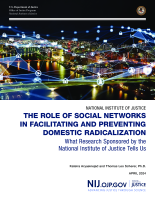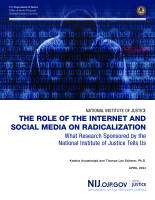The Use of Psychological Interventions in Tertiary Prevention Programs for Individuals Engaged in Violent Extremism: A Scoping Review and Interviews
Date Published
March 2025
Agencies
NIJ-Sponsored
Publication Type
Research (Applied/Empirical)





